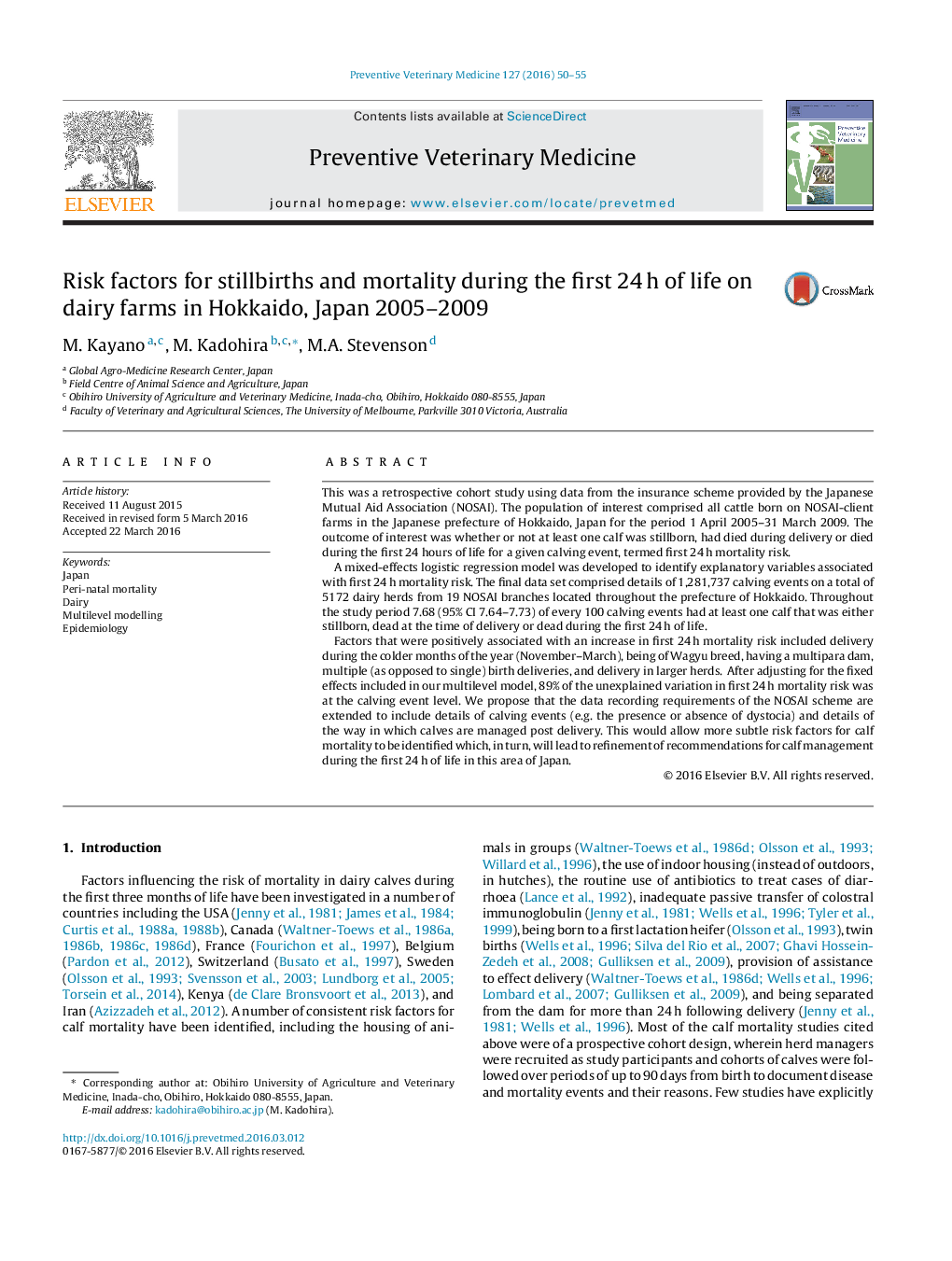| Article ID | Journal | Published Year | Pages | File Type |
|---|---|---|---|---|
| 5793122 | Preventive Veterinary Medicine | 2016 | 6 Pages |
Abstract
Factors that were positively associated with an increase in first 24Â h mortality risk included delivery during the colder months of the year (November-March), being of Wagyu breed, having a multipara dam, multiple (as opposed to single) birth deliveries, and delivery in larger herds. âAfter adjusting for the fixed effects included in our multilevel model, 89% of the unexplained variation in first 24Â h mortality risk was at the calving event level. We propose that the data recording requirements of the NOSAI scheme are extended to include details of calving events (e.g. the presence or absence of dystocia) and details of the way in which calves are managed post delivery. This would allow more subtle risk factors for calf mortality to be identified which, in turn, will lead to refinement of recommendations for calf management during the first 24Â h of life in this area of Japan.
Related Topics
Life Sciences
Agricultural and Biological Sciences
Animal Science and Zoology
Authors
M. Kayano, M. Kadohira, M.A. Stevenson,
